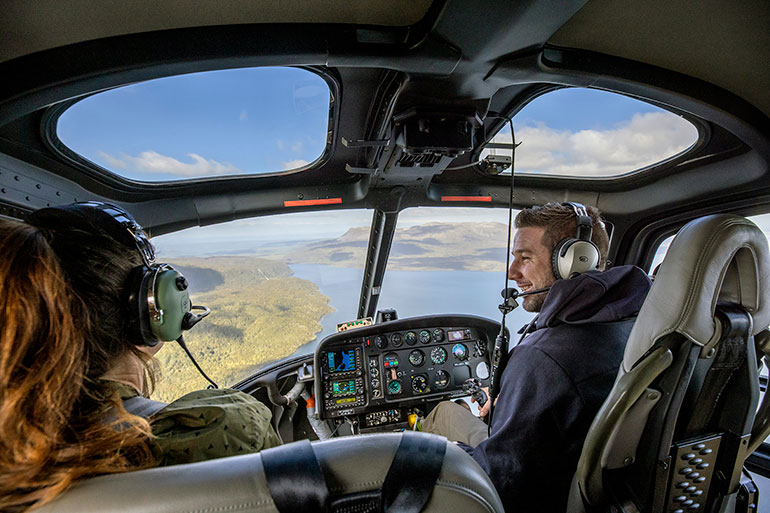Preparing for the future
On this page
While no one knows exactly what the future holds, there is a body of evidence about key trends that will shape the future of the tourism workforce.
The tourism labour market is shrinking. The total number employed in the industry dropped from 221,000 in 2019 to 146,000 in 2021 [1]. The number of New Zealanders in full-time study in tourism and hospitality has also fallen from 7,860 in 2013 to 5,085 in 2020 [2]. Another metric is only 2 out of 5 people who trained as chefs are still working in the hospitality sector five years after graduating [3]. This is not unique to New Zealand: global shortages of willing, professionally qualified chefs have created a scarcity of labour.
Demographic changes could exacerbate shortages in the tourism labour force in the future. The majority of the current tourism workforce are young (almost half are under the age of 34 [4]), but our overall population is ageing - in 2073, half the Aotearoa New Zealand population will be older than 47 years [5]. Without addressing the issue of labour scarcity, any future growth of the sector will be constrained [6].
Consumer preferences are also changing. The Colmar Brunton Better Futures Report found that 76% of New Zealanders would stop buying a company’s products or using their services if they heard about them being irresponsible or unethical [7]. This mirrors global trends, with a 2021 study finding that at least a third of consumers are willing to pay more for sustainable products, and companies should prepare for sustainability to become the expectation and not the exception [8].
Meanwhile, technology is becoming increasingly sophisticated. In some cases, this will enhance what humans can do, and in others it will replace what humans do. According to experts, we are currently experiencing the first of three ‘waves’ of technology in the workforce [9]. This first wave, an algorithmic wave, is largely about computational tasks becoming automated. The second wave, an augmentation wave, is expected to transform clerical support and decision-making, and take over more routine physical labour. The third wave, called the autonomous wave, is predicted to last until the mid-2030s and will result in the automation of physical labour. While estimates vary, some predict that waves two and three will disproportionately affect the less educated.
Robots are already being used in some aspects of tourism and hospitality. In early 2021, British start-up Moley Robotics released its consumer-facing robotic kitchen. The setup includes a touchscreen interface, robotic arms (with over 100 sensors to mimic human hand movements), hobs, an oven, and a recipe library [10]. Beyond simple automation of existing processes, robotics and Artificial Intelligence will have the potential to change the very nature of our tourism offering. Some predict that, in the future, tourism careers may not be about tour guides, chefs and room attendants but Artificial Intelligence Advisors, Human-Machine Engineers, Hotel Robotic Controllers, or Augmented Reality Journey Planners.
This reinforces the importance of building a regenerative (and therefore inherently resilient) workforce that can adapt to these future shocks and trends.
This section has been informed by research completed by Dr Ian Yeoman, Futurist at Victoria University of Wellington.

Photo: Miles Holden
Footnotes
1. Tourism Satellite Account, year ending March 2021 https://www.stats.govt.nz/information-releases/tourism-satellite-account-year-ended-march-2021(external link).
2. Domestic Students - Studying Hospitality & Tourism at Tertiary Level, https://www.educationcounts.govt.nz/statistics/tertiary-participation(external link).
3. Ministry of Business, Innovation and Employment (2020), Occupation Outlook – Chefs, Ministry of Business, Innovation and Employment, https://occupationoutlook.mbie.govt.nz/service-industries/chefs/(external link).
4. Estimate created using data sourced from Stats NZ, Household Labour Force Survey (June 2021) and tourism product ratios from the Tourism Satellite Account (2021).
5. Stats NZ (2020, December 8), National Population Projections: 2020(base)-2073, Stats NZ, https://www.stats.govt.nz/information-releases/national-population-projections-2020base2073(external link)
6. Inchausti-Sintes, F., Pérez-Granja, U., & Morales-Mohamed, J. J. (2021), Analysing labour productivity and its economic consequences in the two Spanish tourist archipelagos, Tourism Economics, 27(5), 1039-1059; Leaver, J. (2021), The State of Utah’s Travel and Tourism Industry 2020, The University of Utah, https://gardner.utah.edu/wp-content/uploads/TravelTourism-Dec2021.pdf?x71849; Webster, C., & Ivanov, S. (2020), Demographic change as a driver for tourism automation, Journal of Tourism Futures, 6(3), 263-270.
7. Bolger, S. (2020), Better Futures 2020, Kantar, https://www.kantarnewzealand.com/better-futures-reports-2020/(external link)
8. Simon Kucher and Partners, 2021 Global Sustainability Study 2021: Initial insights (simon-kucher.com)
9. Hawksworth, J., Berriman, R., & Goel, S. (2018), Will robots really steal our jobs? An international analysis of the potential long term impact of automation, PricewaterhouseCoopers, http://pwc.co uk/economics(external link).
10. Moley. The Future is Served. https://moley.com/(external link).

